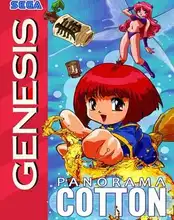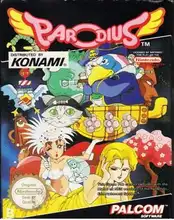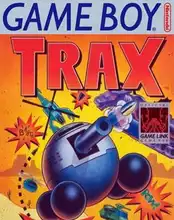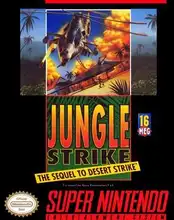The screen fills with a kaleidoscope of enemy sprites, projectiles, and explosions. Your tiny ship, plane, or sometimes even a brave little character, weaves through the chaos, unleashing a relentless stream of fire. This is the essence of the Shoot 'em Up, or "Shmup" as fans affectionately call them – a genre built on pure, unadulterated action and lightning-fast reflexes.
For many retro gamers, the mention of a Shoot 'em Up instantly transports them back to dimly lit arcades, pockets heavy with coins, or late nights hunched over a glowing CRT screen. These games were the ultimate test of skill, memory, and sheer grit.
What Exactly IS a Shoot 'em Up?
At its core, a Shoot 'em Up is a subgenre of shooter video games where the player character is typically a vehicle (like a spaceship or plane) and the primary objective is to shoot a large number of enemies while dodging their attacks. Movement is often restricted to a single plane (vertical or horizontal scrolling), though some offer free movement.
Key characteristics include:
- Overwhelming Enemies: You're almost always outnumbered.
- Constant Firing: Holding down the fire button is standard practice.
- Dodging: Weaving through enemy fire is as crucial as shooting.
- Power-ups: Collecting items to enhance weaponry, speed, or defenses.
- Boss Battles: Large, multi-stage enemies at the end of levels.
- High Scores: The ultimate goal in many classic shmups was chasing leaderboard glory.
The Golden Age: Arcades and Early Consoles
While early examples existed, the Shoot 'em Up genre truly exploded in the arcade scene of the late 70s and 80s. Games like Space Invaders and Galaxian laid the groundwork, but titles like Gradius, R-Type, and 1942 refined the formula, introducing scrolling levels, distinct power-up systems, and memorable boss encounters.
Playing these games in the arcade was a sensory overload – vibrant pixel art, pumping soundtracks, and the constant clatter of joysticks and buttons. Bringing them home to systems like the NES, Sega Genesis, or even early PCs via DOSBox ports, offered a taste of that intensity, even if the graphics and sound were sometimes scaled back.
Key Eras and Evolutions
The genre didn't stand still. It evolved in several directions:
- Vertical vs. Horizontal: Early games were often vertical, mimicking arcade monitors. Horizontal scrolling became popular with games like Gradius.
- "Cute 'em Ups": Titles like Konami's TwinBee injected humor and whimsical graphics into the frantic action.
- Bullet Hell (Danmaku): Starting prominently in the mid-90s, pioneered by developers like Cave (known for games like DoDonPachi and Mushihimesama), this subgenre features screens filled with incredibly dense, patterned enemy fire, forcing players to find tiny safe spots with precise movements (often utilizing a smaller, visible hitbox). Toaplan titles like Batsugun were early precursors to this style.
Each era brought new mechanics, visual styles, and challenges, but the core loop of shoot and dodge remained.
Why We Still Love 'Em
Decades later, why do Shoot 'em Up games still resonate with retro enthusiasts?
- Pure Gameplay: They strip away complex mechanics, focusing on fundamental action.
- Skill-Based: Mastery comes from practice, pattern recognition, and reflexes.
- Nostalgia: They are inextricably linked to the golden age of arcade and early console gaming.
- Accessibility: While challenging, the core concept is easy to grasp.
- Art Style: The pixel art and visual designs of many classic shmups are timeless.
Whether it's the historical significance of 1942, the strategic power-ups of Gradius, or the mesmerizing patterns of a Cave bullet hell title like DoDonPachi, there's a shmup out there for every action fan.
Finding Your Next Shmup Fix
Want to dive back into the world of Shoot 'em Up games? You've got options:
- Digital Stores: Platforms like GOG.com often have collections of classic shmups, perfectly emulated and ready to play on modern PCs.
- Emulation: For true retro experiences, emulators for arcade boards or classic consoles (like MAME, Nestopia, Gens, etc.) can bring back countless titles. Remember to own the original games!
- Online Archives: Sites like Archive.org host many shareware or abandonware titles that might scratch that old-school PC shmup itch (often playable via DOSBox in your browser!).
- Modern Ports/Remakes: Many classic shmups have received modern ports or enhanced versions on current platforms.
So, fire up your engines, grab your virtual joystick, and prepare to dodge. The world of Shoot 'em Up awaits!
FAQ
Q: What's the difference between a Shoot 'em Up and a standard shooter? A: Shoot 'em Ups typically focus on vehicles (spaceships, planes) in a fixed-perspective scrolling environment, emphasizing dodging dense projectile patterns and destroying hordes of enemies. Standard shooters (like FPS or TPS) usually involve on-foot characters, free movement, cover systems, and more varied objectives.
Q: Is Bullet Hell just impossible? A: While visually overwhelming, Bullet Hell games are designed around pattern recognition and finding small safe zones. They are challenging but beatable with practice and understanding of mechanics like the hitbox.
Q: Are there any modern Shoot 'em Ups? A: Absolutely! The genre is still active, with indie developers and Japanese studios (like Cave) releasing new titles that push the boundaries of the genre while respecting its roots.
Q: Where did the term "Shmup" come from? A: "Shmup" is simply a shortened, phonetic slang term derived from "Shoot 'em Up," widely adopted by the gaming community.




